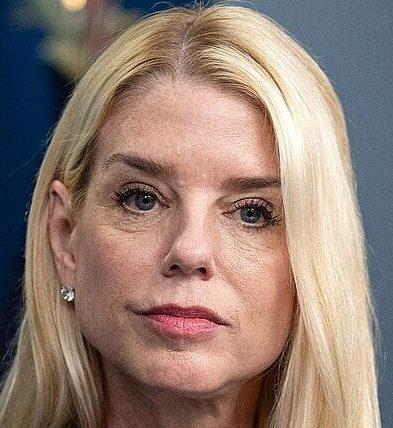Share
Post
Viber icon
Viber
Pam Bondi 2025 (Photo credit – Department of Justice)
LOS ANGELES – The U.S. Justice Department under President Donald Trump filed a lawsuit Thursday to block California’s newly approved congressional map, opening a major legal battle that could influence which party controls the House of Representatives after the 2026 midterm elections.
The case targets new district lines created under Proposition 50, a constitutional amendment that voters approved in a November 4 special election. Proposition 50 authorizes a Legislature-drawn congressional map for elections from 2026 through 2030, replacing the boundaries drafted by the California Citizens Redistricting Commission after the 2020 census. Supporters said the temporary shift was necessary to respond to mid-decade partisan remapping in Texas and other Republican-led states.
DOJ alleges unconstitutional use of race in California map
In its filing, the Justice Department argues that race predominated in drawing several districts without meeting constitutional standards. Federal lawyers say the state relied on Latino population targets and racial considerations in ways that gave Democrats an unlawful partisan advantage.
“California’s redistricting scheme is a brazen power grab that tramples on civil rights and mocks the democratic process,” Attorney General Pamela Bondi said in a statement. She argued that the map uses race in violation of Supreme Court rulings on gerrymandering.
The DOJ action tracks with an earlier lawsuit filed by the California Republican Party and several GOP voters, who also claim that the map is an unconstitutional racial gerrymander under the Fourteenth and Fifteenth Amendments.
Governor Gavin Newsom’s office dismissed the allegations. Spokesperson Brandon Richards said opponents “lost at the ballot box” and would likely lose again in court.
What Proposition 50 changed in California’s redistricting process
Proposition 50 reached the November ballot after the Democratic-controlled Legislature passed measures to call the special election and define new boundaries through AB 604. Governor Newsom signed the implementing bill in August. The amendment passed with about 64.6 percent support, according to the California Secretary of State.
The Legislature-drawn map was designed by Democratic redistricting consultant Paul Mitchell. Nonpartisan analysts say the plan gives Democrats a realistic chance to flip as many as five Republican-held House seats by unpacking heavily Democratic districts and restructuring several GOP-leaning areas. Critics argue that the map prioritizes partisan outcomes over traditional redistricting criteria.
A national political arms race shapes California’s decision
California’s mid-decade redistricting is widely viewed as a direct response to Texas, where state lawmakers approved a Trump-backed congressional map expected to add up to five Republican seats. Proposition 50 aims to offset those gains by creating new opportunities for Democrats in the nation’s largest state.
Republicans currently hold 219 House seats, while Democrats hold 214. With such a narrow majority, even small shifts in California, Texas and other competitive states could determine which party controls the House after the 2026 midterms.
The Justice Department’s filing notes that other states, including Missouri, North Carolina and Ohio, have taken steps toward mid-decade map changes, prompting legal challenges over race and partisanship. California’s case now forms part of this broader national fight over who draws political boundaries and what limits the Constitution imposes.
Millions spent and national figures engage in the campaign
The Proposition 50 campaign drew significant national spending. The Congressional Leadership Fund, a Republican-aligned super PAC tied to House Speaker Mike Johnson, contributed about five million dollars to efforts opposing the measure.
Former California Governor Arnold Schwarzenegger, who championed the creation of the state’s independent redistricting commission, opposed Proposition 50 and said it undermined reforms intended to limit political influence. Former President Barack Obama endorsed the measure and appeared in advertisements urging voters to approve it, calling it a needed response to partisan gerrymandering in Republican-led states.
The campaign also elevated Newsom’s national profile at a time when he is widely viewed as a potential 2028 presidential contender.
Courts face a tightening timeline ahead of 2026 elections
The lawsuit will now proceed in federal court alongside the earlier Republican challenge. DOJ lawyers have asked judges to block use of the new map while litigation continues. If granted, the state could be required to revert to the 2020 commission-drawn map or adopt an interim plan. Judges have not indicated how they will approach the request.
With the 2026 election cycle approaching, the timing of any ruling is critical. Courts must weigh whether it is more disruptive to change districts close to an election or to allow a challenged map to remain in place for one cycle.

